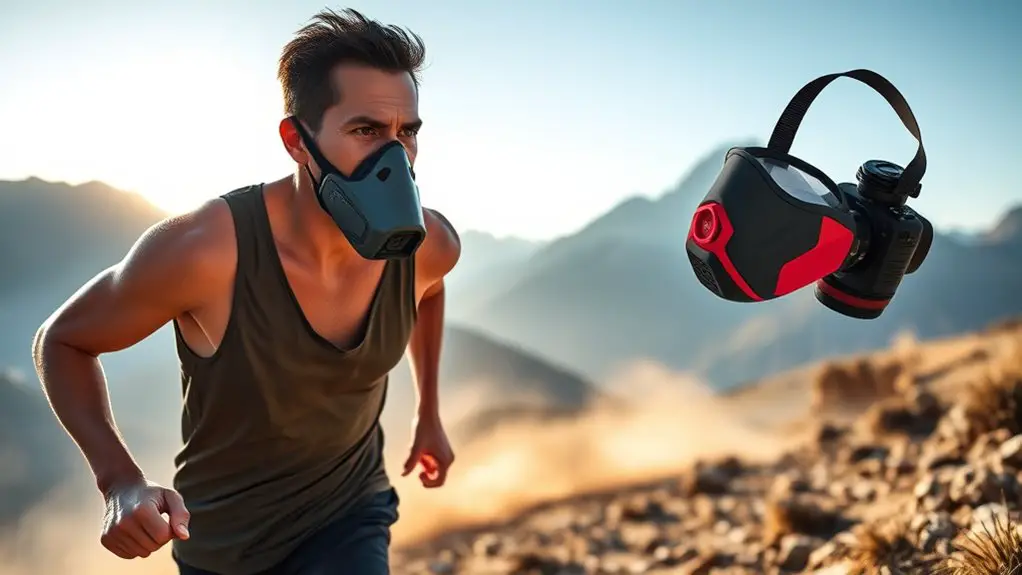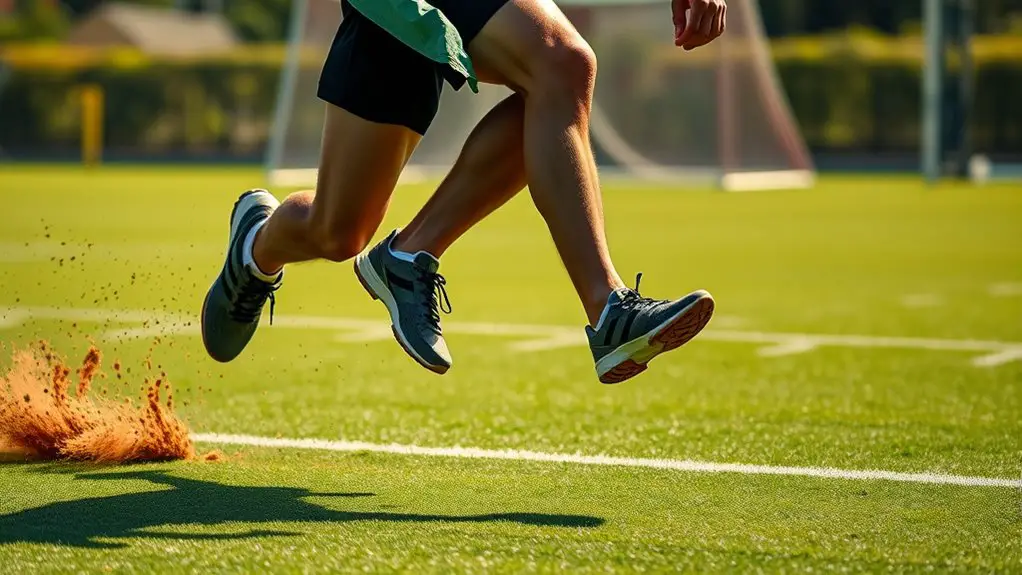Altitude masks can greatly enhance your endurance training by simulating high-altitude conditions. They restrict airflow, pushing your body to adapt to reduced oxygen levels. This adaption improves oxygen delivery to muscles and increases lung capacity. You might experience initial discomfort, but gradual use can lead to improved stamina. However, it's crucial to remember that these masks are just one part of your training routine. Keep exploring how to effectively integrate them for maximum benefits.
The Science Behind Altitude Masks
While it might seem counterintuitive, altitude masks are designed to simulate high-altitude conditions by restricting airflow, which can enhance your body's endurance capabilities. When you wear one, you're forcing your body to adapt to reduced oxygen levels, much like you would experience at higher elevations. This process encourages your lungs and heart to work harder, ultimately building your stamina.
You might feel a bit uncomfortable at first, but that's part of the process. As you train with an altitude mask, you're not just pushing your limits; you're also expanding them. Your body learns to operate more efficiently, increasing your overall performance and freedom during activities. It's about releasing your potential and seizing every opportunity to explore your limits. By integrating altitude masks into your routine, you're taking a bold step toward greater endurance and the freedom that comes with it. Embrace the challenge, and let your body soar! Additionally, utilizing high-intensity interval training can complement the benefits of altitude masks by enhancing your VO2 max, which is crucial for endurance performance.
Benefits of Using Altitude Masks in Endurance Training
As you incorporate altitude masks into your endurance training, you'll discover a range of benefits that can greatly enhance your performance. First off, these masks simulate high-altitude conditions, which can boost your red blood cell production, improving oxygen delivery to your muscles. You'll likely find that this leads to improved stamina and endurance during your workouts.
Additionally, training with an altitude mask can help increase your lung capacity and overall respiratory efficiency. You'll be pushing your body to adapt to lower oxygen levels, which can result in better performance when you're back at sea level.
Using altitude masks can also add variety to your training routine, keeping things fresh and exciting. You'll find that the challenge can strengthen both your mental and physical resilience. Embrace the freedom that comes from pushing your limits, and watch as your endurance skills soar. Moreover, enhancing your lactate threshold through altitude training may allow you to sustain higher intensities for longer periods, further boosting your endurance capabilities.
Limitations and Misconceptions
Though altitude masks offer various benefits, there are important limitations and misconceptions worth understanding. Many believe these masks simulate high altitude training effectively, but that's not entirely true. They don't replicate the actual environmental conditions found at high altitudes, which can lead to misunderstanding their effectiveness. You might think wearing one will drastically boost your endurance, but the physiological adaptations require consistent, real altitude exposure that masks can't provide.
Additionally, some users assume that simply wearing the mask during workouts will automatically yield results. However, it's crucial to recognize that they're just one tool in your training arsenal, not a magic solution. Misusing them or relying solely on altitude masks could hinder your progress rather than help it. So, while they can complement your regimen, it's important to keep a realistic perspective on what they can and cannot do for your endurance training. Furthermore, understanding the differences between strength and endurance training can help you integrate altitude masks more effectively into your overall fitness strategy.
Practical Tips for Incorporating Altitude Masks
Incorporating altitude masks into your training regime can be a game-changer if done correctly. Start slow; wear the mask for shorter sessions to get used to the restricted airflow. Gradually increase the duration as you build endurance. Aim for a balanced approach—don't overdo it! Additionally, remember that consistent mileage builds aerobic capacity, which can complement the benefits of altitude training.
| Tip | Description |
|---|---|
| Start Slow | Begin with 10-15 minute sessions. |
| Mix It Up | Use the mask during different workouts—running, cycling, or HIIT. |
| Listen to Your Body | Pay attention to how you feel; adjust intensity as needed. |
Real-World Experiences and Testimonials
Many athletes have shared their personal journeys with altitude masks, offering insights that highlight both the benefits and challenges of using them in training. You might find it inspiring to hear how some have experienced improved lung capacity and stamina after consistent use. For example, one runner reported feeling more energized during long races, attributing this to the enhanced oxygen efficiency gained from training with the mask.
However, it's not all smooth sailing. Some athletes mention feeling restricted or uncomfortable at first, which can be a real hurdle. They often advise starting slow and gradually increasing the intensity. Real-world testimonials emphasize the importance of listening to your body—what works for one may not work for another. Ultimately, the freedom to experiment with altitude masks can lead to personal breakthroughs in your training, but it's crucial to find your own rhythm and approach to maximize the benefits.
Frequently Asked Questions
Can Altitude Masks Help With Weight Loss During Training?
Altitude masks might give you a challenge during workouts, but they don't guarantee weight loss. You'll need a balanced diet and consistent training to see real results. Focus on a holistic approach for lasting change.
How Often Should I Train With an Altitude Mask?
"Practice makes perfect," so aim to train with your altitude mask 2-3 times a week. Start with shorter sessions, gradually increasing duration. Listen to your body, and enjoy the freedom that comes with improved endurance!
Do Altitude Masks Improve Sprinting Performance?
Altitude masks might not greatly enhance your sprinting performance. While they simulate high-altitude conditions, their benefits are more pronounced in endurance training. Focus on specific sprint drills for ideal speed improvement instead.
Are Altitude Masks Safe for Beginners?
Altitude masks can be safe for beginners, but they might feel uncomfortable at first. It's important to start slowly, listen to your body, and make certain you're using the mask correctly to avoid any adverse effects.
Can Altitude Masks Be Used for Other Sports Besides Running?
Altitude masks can definitely be used for various sports beyond running, like cycling or cross-training. They're like wings for your lungs, helping you push your limits and embrace the freedom of enhanced performance. Just give it a try!



